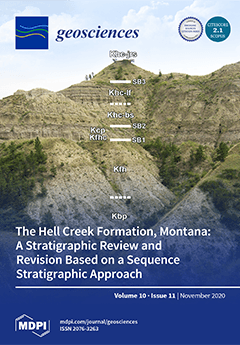Awu is a remote and little known active volcano of Indonesia located in the northern part of Molucca Sea. It is the northernmost active volcano of the Sangihe arc with 18 eruptions in less than 4 centuries, causing a cumulative death toll of 11,048. Two of these eruptions were classified with a Volcanic Explosivity Index (VEI) of 4. Since 2004, a lava dome has occupied the centre of Awu crater, channelling the fumarolic gas output along the crater wall. A combined Differential Optical Absorption Spectroscopy (DOAS) and Multi-component Gas Analyzer System (Multi-GAS) study highlight a relatively small SO
2 flux (13 t/d) sustained by mixed magmatic–hydrothermal emissions made-up of 82 mol.% H
2O, 15 mol.% CO
2, 2.55 mol.% total S (S
T) and 0.02 mol.% H
2. The CO
2 emission budget, as observed during a short observation period in 2015, corresponds to a daily contribution to the atmosphere of 2600 t/d, representing 1% of the global CO
2 emission budget from volcanoes. The gas CO
2/S
T ratio of 3.7 to 7.9 is at the upper limit of the Indonesian gas range, which is ascribed to (i) some extent of S loss during hydrothermal processing, and perhaps (ii) a C-rich signature of the feeding magmatic gas phase. The source of this high CO
2 signature and flux is yet to be fully understood; however, given the peculiar geodynamic context of the region, dominated by the arc-to-arc collision, this may result from either the prolonged heating of the slab and consequent production of carbon-rich fluids, or the recycling of crustal carbon.
Full article





